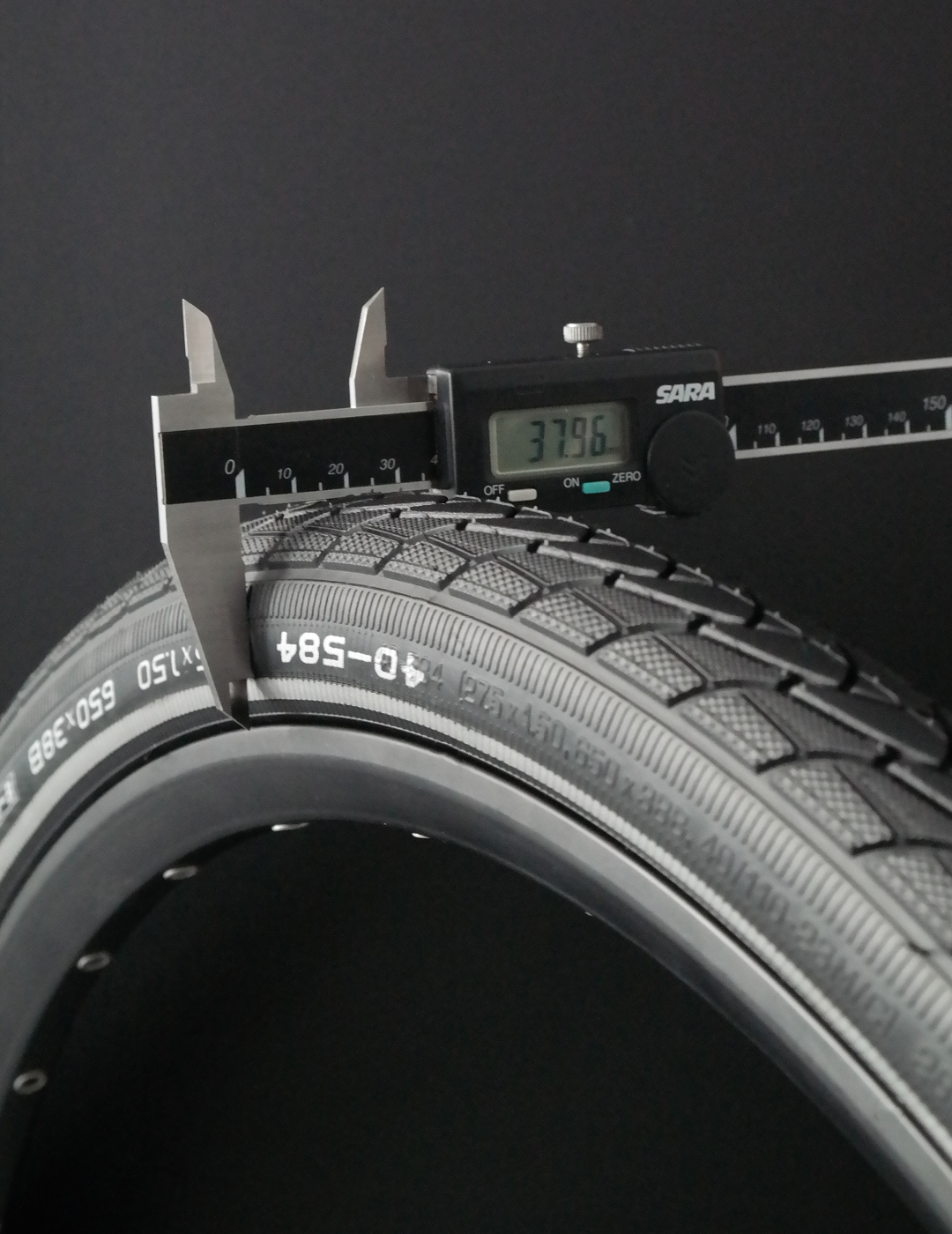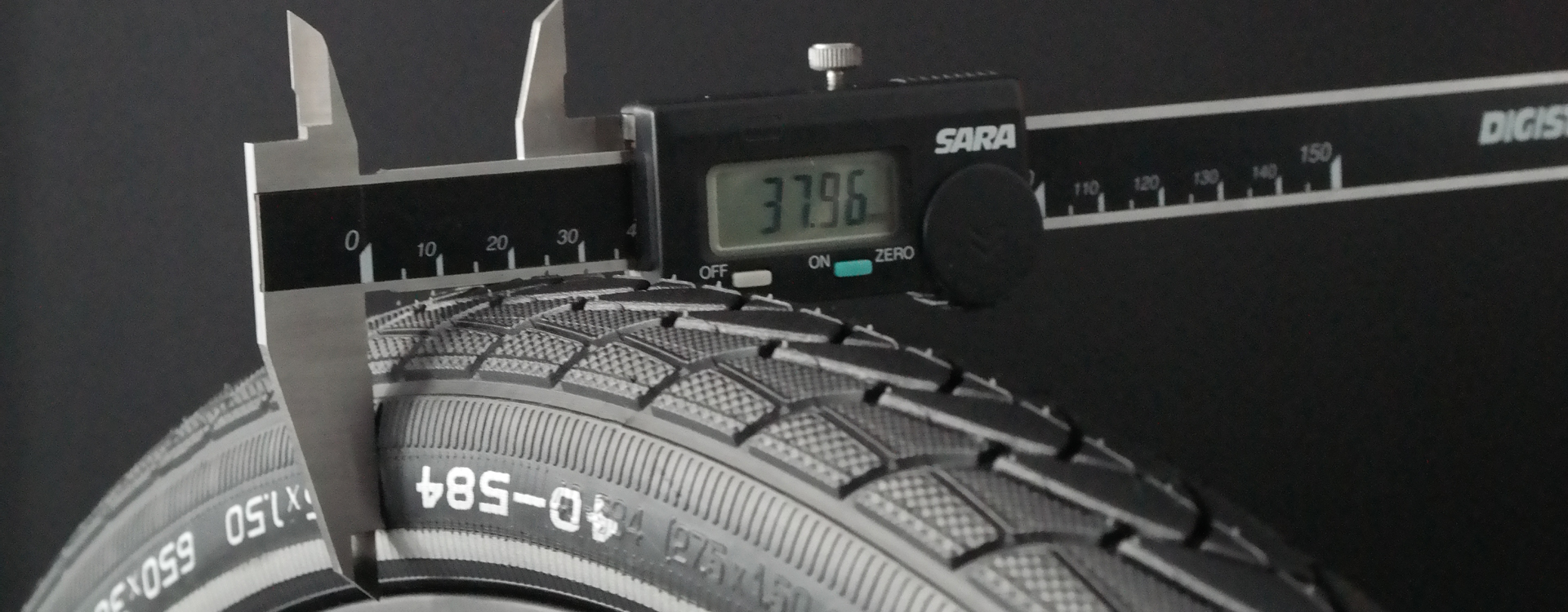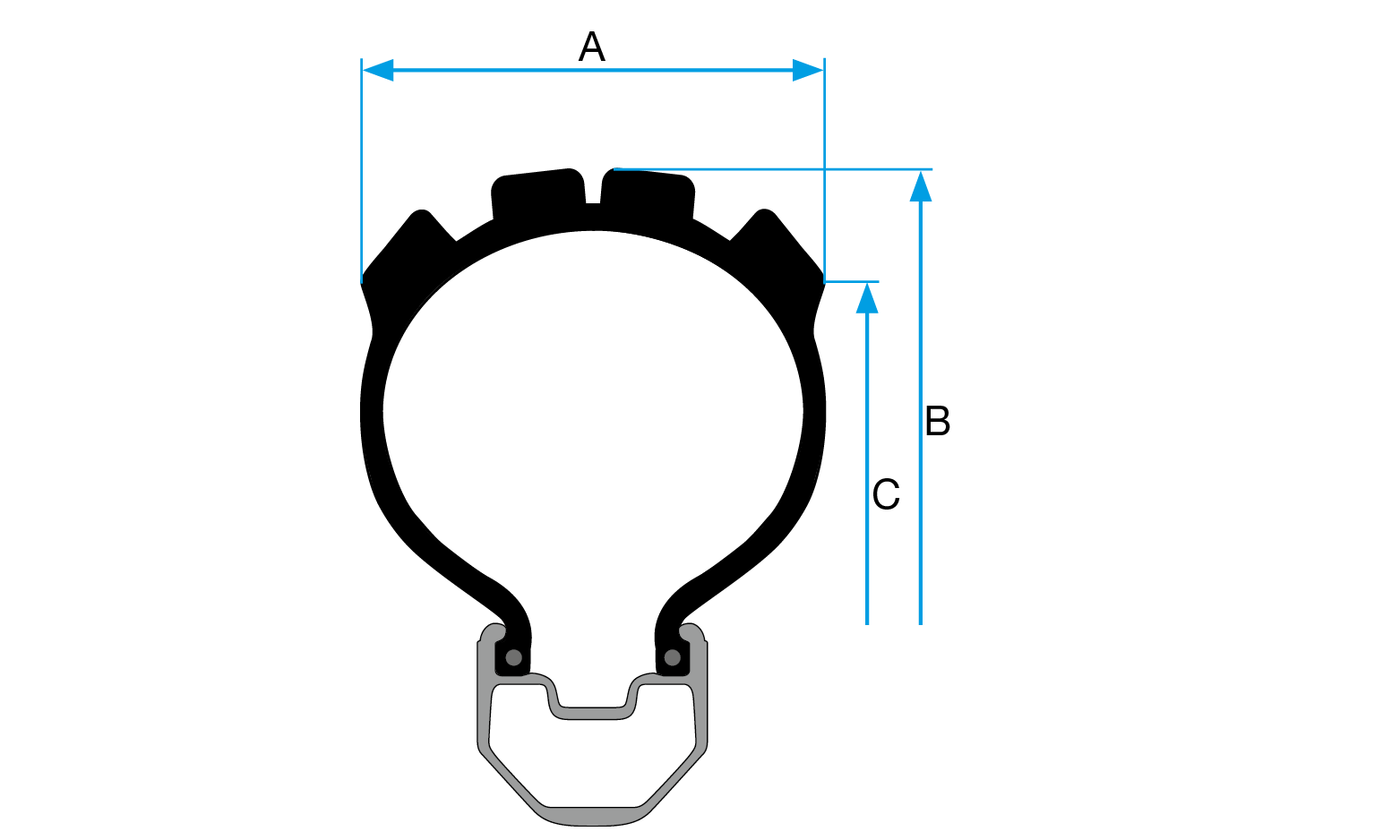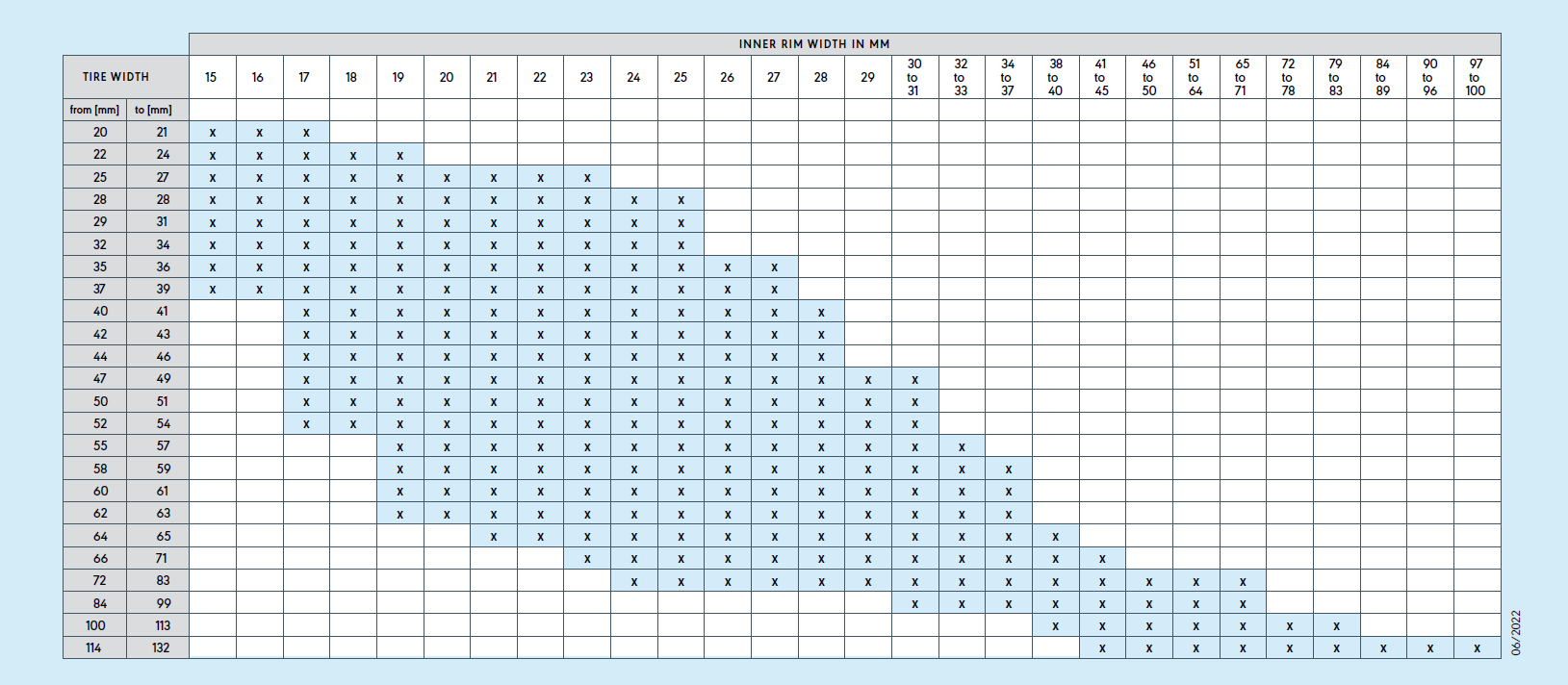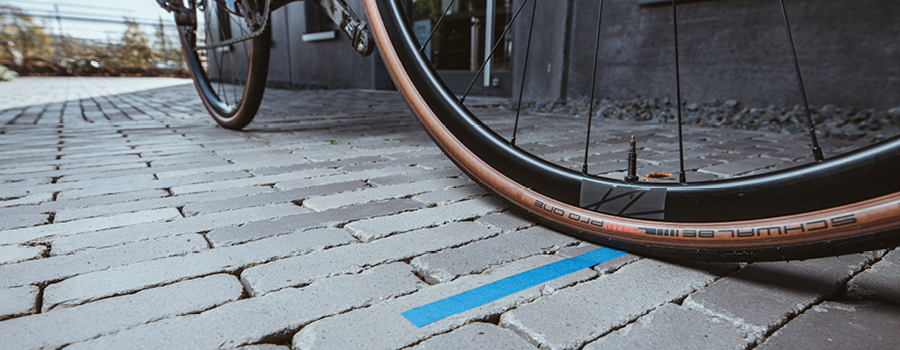TIRE SIZES
WHY ARE TIRES OFTEN NARROWER THAN THE SIZE INDICATED?
In order to ensure that the tires have sufficient clearance in the frame, most tire manufacturers prefer to use the permissible tolerance range (+/- 3 mm) or less. The quality of carcass materials has improved over the course of time. As a result, the tires expand less after mounting. Air pressure also plays a major role. At maximum air pressure, the tire becomes wider than at low pressure. And a freshly fitted tire also expands further over time. This can make a difference of 1-2 mm. The tire width is measured at the widest point, i.e. on the outside of the lug.
DOES THE TIRE FIT MY FRAME?
With our particularly wide tires, the question often arises as to whether the tires will still fit in the frame. Please understand that due to the large number of bicycle models, we cannot check all frames for compatibility with the various tires. Below we provide the exact diameters and widths of our extra-wide tires. You can use this information to check whether the installation dimensions of your frame offer enough space for the desired tire.
WHICH TIRE FITS WHICH RIM?
The inner tire diameter must match the rim shoulder diameter. For example, the tire size 37-622 fits on a 622 x 19C rim. The tire width and inner rim width must also be matched. The table shows possible combinations of tire width and inner rim width according to ETRTO, supplemented by Schwalbe recommendations.
Possible combinations of tire width and inner rim width
Hookless or straight-sided rims may only be combined with TLE/TLR tires (Tubeless Easy/Tubeless Ready).
The compatible types (tubeless) and tire widths specified by the wheel/rim manufacturer must be taken into account. In particular, the minimum tire widths.
tubeless wheel requirements info
This restriction applies regardless of the intended use (MTB, gravel/cross, city/tour, road bike).
Note: Always observe the information on maximum air pressure and tire type (tubeless/tube type) provided by the rim manufacturer.
WHAT IS THE EXACT CIRCUMFERENCE OF MY TIRE?
Exact tire circumferences are often required for precise programming of the bike computer. The wheel circumference varies depending on the inner rim width, puncture protection in the tire, air pressure and weight load. For this reason, we cannot specify the exact wheel circumferences. For precise programming of a wheel computer, we recommend a simple rolling test with the rider in the saddle: Align the valve from the front wheel at the bottom 6 o’clock position, make a mark on the floor or lay the end of a tape measure at this point, roll the bike forward in as straight a line as possible until the front has done one full rotation and the valve is once again the 6 o’clock position. Then take the distance measurement directly from the tape measure or mark the floor at this point and measure between the two marks. This distance will give you a fairly precise rolling circumference for the front wheel which can be entered into your computer.
WHAT MIGHT ALSO BE OF INTEREST FOR YOU
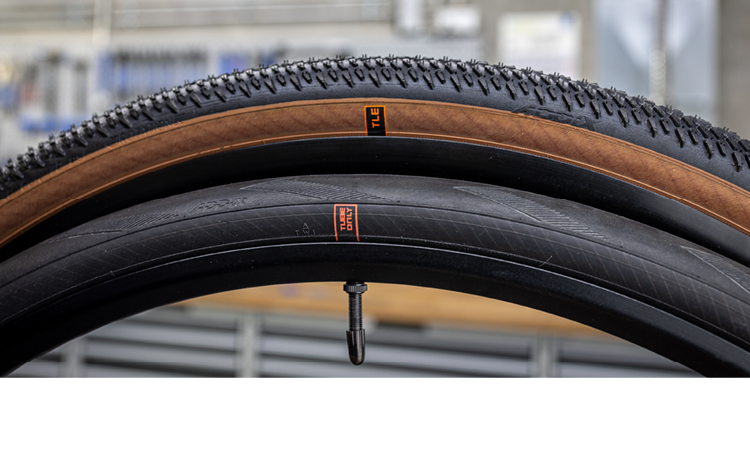
THE DIFFERENT TIRE TYPES AT A GLANCE
Wired tires, folding tires, tubular tires and tubeless tires - in this article you will learn all about the differences and advantages of the different types of tires for your bike. Find out which tire best suits your needs and optimize your performance!
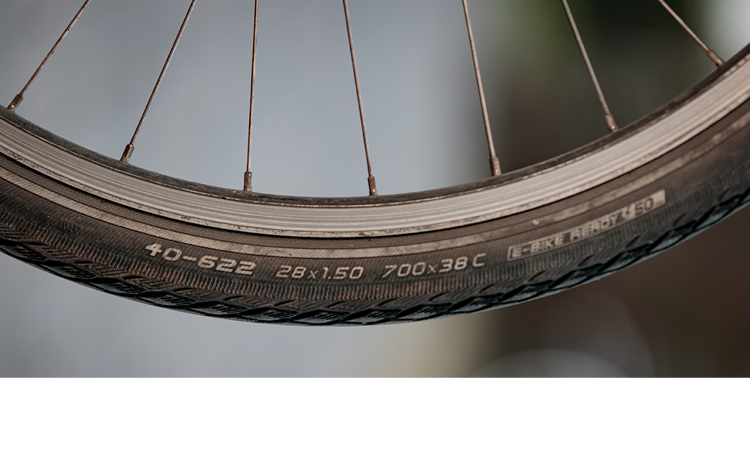
WHAT DO THE DIFFERENT SIZES MEAN?
Have you always wanted to know what the different size designations for bicycle tires are all about? From ETRTO to inch to French - we've got you covered! Find out how tire width, diameter and even inner diameter are indicated in the respective designations. We also reveal some curious background information and why some designations are not always unambiguous.

